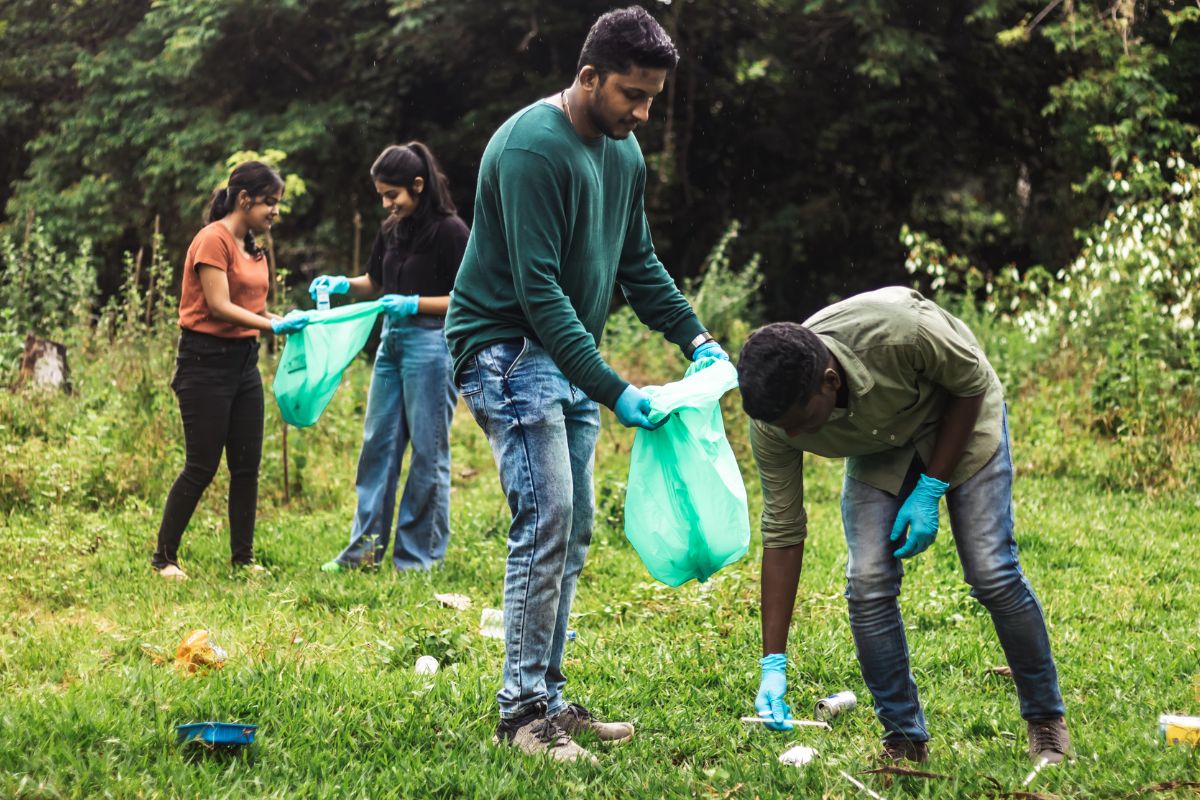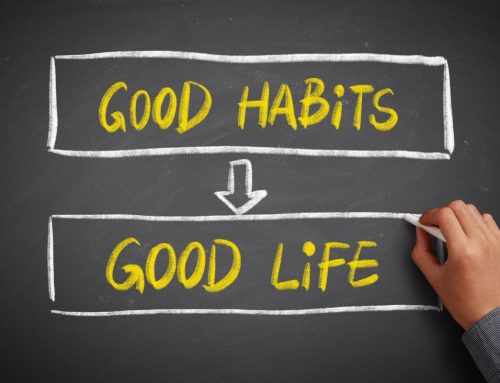Sustainable living is a conscious and holistic approach to daily life that prioritizes environmental preservation and responsible resource management. It encompasses a wide range of practices and choices aimed at minimizing harm to the planet while promoting ecological balance, social equity, and economic stability.
At its core, sustainable living involves making mindful decisions in various aspects of life. This includes reducing waste generation by embracing practices like composting or opting for reusable items. It also entails conserving resources such as water and energy through efficient use and adopting renewable energy sources where possible.

What does a sustainable life look like?
Sustainable living extends to food choices, supporting local and organic produce, reducing meat consumption, and promoting sustainable agriculture. It encourages eco-friendly transportation options like cycling, walking, public transit, or electric vehicles to reduce carbon emissions. In housing, it involves energy-efficient designs, utilizing green building materials, and reducing overall energy consumption.
Embracing a sustainable lifestyle means supporting ethical and fair-trade products, advocating for biodiversity conservation, and engaging in activities that promote environmental education and awareness. It’s about fostering a deeper connection to nature and recognizing the interdependence between humans and the environment, striving for a healthier and more resilient planet for current and future generations.
Sustainable living guide
-
Reduce, Reuse, Recycle
- Embracing the principles of “reduce, reuse, recycle” forms the bedrock of sustainable living. Reducing waste output by making conscious consumption choices, reusing items whenever possible to extend their lifespan, and actively recycling materials like paper, glass, plastic, and metal are fundamental steps toward minimizing environmental impact and conserving resources.
-
Conserve Water
- Prioritizing water conservation is pivotal for sustainable living. Implementing simple yet effective practices like fixing leaks, installing water-saving appliances and fixtures, harvesting rainwater for non-potable uses, practicing mindful water use in daily activities, and employing efficient irrigation methods in gardening or landscaping contribute significantly to conserving this invaluable resource.
-
Energy Conservation
- Reducing energy consumption is a cornerstone of sustainability. Opting for energy-efficient appliances, utilizing LED lighting, employing smart home technologies to manage energy usage, adopting natural lighting strategies, and exploring renewable energy sources such as solar or wind power can considerably mitigate energy demands and reduce carbon emissions.
-
Eco-Friendly Transportation
- Transitioning to sustainable transportation modes is pivotal for reducing emissions. Embracing public transit, carpooling, biking, walking, or considering electric or hybrid vehicles instead of traditional gasoline-powered cars significantly minimizes carbon emissions and environmental impact associated with transportation.
-
Support Sustainable Food Choices
- Cultivating sustainable eating habits involves choosing locally-sourced, organic produce, reducing meat consumption, supporting small-scale farmers and sustainable agriculture practices, growing your own fruits and vegetables, and employing strategies like meal planning, proper storage, and composting to minimize food waste.
-
Minimalism and Conscious Consumption
- Embracing minimalism and practicing conscious consumption involves adopting a mindset centered on thoughtful purchases, favoring quality over quantity, embracing reusable alternatives to single-use plastics, supporting sustainable brands, and opting for durable, long-lasting products that minimize waste and resource consumption.
-
Composting
- Establishing and maintaining composting systems at home to recycle organic waste into nutrient-rich compost not only reduces the volume of waste sent to landfills but also enriches soil quality, promotes healthy plant growth, and closes the loop on organic matter in a sustainable manner.
-
Green Gardening Practices
- Employing natural and eco-friendly gardening methods such as mulching, companion planting, using organic fertilizers, practicing integrated pest management, and conserving water through smart irrigation techniques help nurture biodiversity, improve soil health, and reduce reliance on chemical treatments in gardening and landscaping.
-
Environmental Advocacy
- Engaging in environmental advocacy initiatives involves active participation in local clean-up drives, supporting policies and legislation that promote sustainability, advocating for conservation efforts, raising awareness about environmental issues, and supporting organizations dedicated to preserving ecosystems and biodiversity.
-
Water Conservation Techniques
- Implementing water-saving techniques such as installing low-flow showerheads, faucets, and toilets, using efficient irrigation systems like drip irrigation, capturing and reusing rainwater, employing drought-resistant plants for landscaping, and practicing water-smart habits indoors and outdoors significantly minimize water consumption and promote sustainable water use practices.
-
Ethical and Sustainable Fashion
- Choose clothing made from sustainable Eco-conscious Fashion Choices: Opt for clothing made from sustainable materials, supporting fair-trade practices, and consider shopping for second-hand or vintage clothing to reduce the environmental impact of the fashion industry. Prioritizing garments made from organic cotton, hemp, bamboo, or recycled materials contributes to a more sustainable and ethical fashion landscape.
-
Mindful Travel and Eco-Tourism
- When traveling, practice mindful and sustainable tourism by choosing eco-friendly accommodations, respecting local cultures and ecosystems, and minimizing your carbon footprint by selecting sustainable transportation options. Engaging in activities that support local communities and nature conservation while being environmentally conscious contributes to responsible tourism practices.
-
DIY Natural Cleaning Products
- Make eco-friendly cleaning solutions using natural ingredients such as vinegar, baking soda, and essential oils. These homemade alternatives not only reduce environmental impact but also promote healthier living environments by avoiding harsh chemicals found in conventional cleaners.
-
Upcycling and Repurposing
- Embrace creativity and sustainability by upcycling old or discarded items into new, functional products. Transforming materials into new objects gives them a new lease on life, reducing waste and diverting items from landfills while fostering a culture of resourcefulness.
-
Environmental Education and Awareness
- Educate yourself and others about environmental issues, engage in discussions, and share information to raise awareness and encourage responsible environmental practices. Participating in workshops, seminars, or community events focused on sustainability cultivates a collective understanding and action towards addressing environmental challenges.
-
Carbon Offsetting
- Offset your carbon footprint by supporting projects that actively reduce greenhouse gas emissions. Investing in renewable energy projects, afforestation initiatives, or methane capture programs helps counterbalance personal or organizational carbon emissions, contributing to global efforts to mitigate climate change.
-
Community Gardening
- Participating in community gardening projects fosters collaboration and allows local residents to collectively grow fresh produce. Community gardens enhance food security, promote sustainable agriculture practices, and encourage a sense of community while reducing dependence on industrially farmed food.
-
Green Energy Investments
- Consider investing in green energy companies or renewable energy projects as part of your financial portfolio. Supporting solar, wind, or hydroelectric power initiatives through investments promotes the transition towards cleaner and more sustainable energy sources.
-
Repair and Repurpose
- Developing repair skills and repurposing items significantly reduces waste. Repairing electronics, appliances, or furniture, and repurposing old items into new uses extends their usability, decreases the need for new purchases, and minimizes landfill waste.
-
Green Finance Choices
- Opt for banks and investment firms that prioritize sustainability and eco-friendly initiatives. Choosing financial institutions that support environmentally responsible practices ensures that your money is directed towards investments that promote sustainability and avoid industries harmful to the environment.
-
Eco-Friendly Home Construction
- Building or renovating homes with sustainable materials like bamboo, reclaimed wood, or recycled materials significantly reduces the environmental impact. Incorporating energy-efficient appliances, solar panels, proper insulation, and adopting green design principles further contributes to sustainable living.
-
Waste Reduction Challenges
- Engaging in waste reduction challenges like zero-waste weeks or months encourages conscious consumption. These challenges promote recycling, composting, and efficient resource management, fostering a mindset that aims to minimize personal waste generation.
-
Sustainable Pet Care
- Practicing eco-friendly pet care by choosing sustainable pet products, utilizing biodegradable waste bags, and opting for pet food made from ethically sourced and sustainable ingredients. These choices help minimize the environmental footprint associated with pet ownership.
-
Sustainable Event Planning
- Organizing events with sustainability in mind involves using reusable or compostable items instead of single-use plastics, minimizing paper usage through digital communication, and ensuring responsible food consumption to reduce waste during events and gatherings.
-
Environmental Volunteering
- Contributing time to conservation and clean-up efforts, volunteering at wildlife centers, or joining environmental organizations actively contributes to preserving natural habitats and educating communities about sustainable living practices.
-
Digital Minimalism
- Embracing digital minimalism by reducing digital clutter, opting for digital documents over paper ones, and choosing eco-friendly devices can significantly reduce electronic waste and the overall environmental impact of technological consumption.
-
Environmental Advocacy Groups
- Joining or supporting environmental advocacy groups amplifies efforts to influence policy changes, promote conservation, and raise awareness about critical environmental issues at local, national, and global levels.
-
Conservation Easements
- Supporting conservation easements, which are legal agreements to protect lands from development, helps preserve biodiversity and natural landscapes. These agreements ensure the long-term protection of critical ecosystems and habitats.
-
Green Business Practices
- Encouraging businesses to adopt sustainable practices by supporting eco-conscious companies, advocating for ethical sourcing, and making purchasing decisions that promote reduced environmental impact contributes to a more sustainable economy.
-
Environmental Stewardship Education
- Supporting educational programs focused on sustainability, climate change, and conservation in schools and communities helps nurture a culture of environmental responsibility. Empowering individuals with knowledge and skills encourages informed decision-making and sustainable practices in daily life.
-
Circular Economy Participation
- Engage in the circular economy by buying products made from recycled materials, supporting brands with take-back programs, and participating in initiatives that repurpose, repair, or recycle products.
-
Mindful Water Use in Landscaping
- Implement water-saving measures in outdoor spaces by incorporating drought-resistant plants, using rain barrels, and installing smart irrigation systems that optimize water usage in gardens or lawns.
-
Green Banking and Financial Choices
- Choose banks and financial institutions that invest in environmentally friendly initiatives, sustainable projects, and ethical companies, thereby contributing to a more sustainable economy.
-
Sustainable Gift-Giving
- Embrace sustainable gift-giving practices by offering experiences, consumables, or eco-friendly gifts that prioritize durability, reusability, and ethical production methods.
-
Reducing Food Packaging
- Minimize food packaging waste by shopping at bulk stores with reusable containers, buying items with minimal packaging, and bringing reusable bags and containers for grocery shopping.
-
Carbon Footprint Tracking
- Use carbon footprint calculators or apps to measure and track personal or household emissions, enabling a better understanding of where improvements can be made to reduce environmental impact.
-
Bee-Friendly Gardening
- Create a bee-friendly garden by planting native flowers, avoiding pesticides harmful to pollinators, and providing shelter or nesting sites to support local bee populations and biodiversity.
-
Eco-Friendly Clothing Care
- Adopt sustainable clothing care practices such as washing clothes in cold water, line-drying, using eco-friendly detergents, and repairing garments to extend their lifespan.
-
Social Sustainability Support
- Extend support to socially sustainable causes by advocating for fair wages, safe working conditions, and ethical sourcing across industries to ensure social equity and justice.
-
Reducing E-Waste
- Responsibly dispose of electronic waste (e-waste) by recycling old gadgets, donating working electronics, or purchasing devices with longevity and upgradability in mind to reduce electronic waste accumulation.
The challenges of having a sustainable lifestyle
Leading a sustainable lifestyle it’s quite a challenge due to various reasons:
Limited Access to Sustainable Products
Access to eco-friendly or sustainable products might be restricted based on geographical location, economic status, or availability. Certain areas may have limited access to organic produce, renewable energy options, or ethical clothing brands.
Higher Costs
Sustainable alternatives often come with higher price tags due to ethical sourcing, eco-friendly materials, or production methods. This higher cost can deter individuals on a budget from consistently choosing sustainable options.
Consumer Behavior and Convenience
Fast-paced lifestyles and convenience-oriented consumer behavior can make it challenging to prioritize sustainability. Quick and disposable products are often more convenient than reusable or environmentally friendly alternatives.
Limited Infrastructure
Infrastructure in many areas might not support sustainable living practices. Inadequate public transportation, insufficient recycling facilities, or limited access to renewable energy sources can hinder efforts towards sustainability.
Complex Supply Chains
Supply chains for products involve numerous stages, making it difficult to trace the entire lifecycle of a product. This lack of transparency can make it challenging to ascertain the environmental impact and ethical standards of a product.
Greenwashing
Some companies might engage in “greenwashing,” where they falsely market products as eco-friendly without meeting sustainable standards. This can mislead consumers and make it difficult to identify genuinely sustainable options.
Cultural Norms and Social Expectations
Social norms and expectations may not always align with sustainable living practices. Consumer culture often emphasizes constant consumption, making it challenging to shift mindsets toward sustainability.
Resistance to Change
Adopting sustainable habits often requires changing established behaviors, which can be difficult. Resistance to change and the discomfort of breaking habits can impede the adoption of sustainable practices.
Lack of Education and Awareness
Limited understanding or awareness of environmental issues and their impact might hinder individuals from making informed and sustainable choices.
Global Challenges and Systemic Issues
Addressing larger systemic issues like climate change, resource depletion, and environmental degradation requires collective efforts, policy changes, and global cooperation, making individual actions seem insufficient.
Advantages to taking this lifestyle
But living a sustainable lifestyle offers several essential advantages for our live, including:
Environmental Benefits
Sustainable living significantly reduces individual and collective environmental footprints. It helps in conserving natural resources like water, forests, and biodiversity. Moreover, it decreases pollution, reduces reliance on fossil fuels, and helps combat climate change by lowering greenhouse gas emissions.
Cost Savings and Financial Benefits
While some eco-friendly products might initially seem more expensive, adopting sustainable practices often leads to long-term cost savings. For instance, energy-efficient appliances, water-saving fixtures, and practices such as composting and growing your own food can significantly reduce utility bills and expenses related to food and household supplies.
Health and Well-being
Sustainable living often translates to a healthier lifestyle. Consuming organic and locally sourced food tends to be more nutritious and reduces exposure to harmful pesticides and chemicals. Additionally, spending time outdoors, engaging in activities like gardening, and breathing cleaner air positively impact mental health and overall well-being.
Climate Resilience
Sustainable practices help communities become more resilient to climate change impacts. By conserving resources, reducing waste, and adopting renewable energy sources, individuals and communities can better withstand the adverse effects of climate change, such as extreme weather events or resource scarcity.
Support for Local Economies
Choosing locally produced goods and supporting eco-friendly businesses helps stimulate local economies. It fosters job creation, supports small-scale farmers and artisans, and bolsters community development.
Ethical Consumerism
Sustainable living encourages ethical practices, such as fair trade, responsible sourcing, and supporting companies that prioritize social responsibility and environmental stewardship.
Resource Conservation and Preservation
By adopting sustainable practices, individuals contribute to the conservation and preservation of natural resources, ensuring they remain available for future generations.
Lifelong Learning and Innovation
Embracing sustainability encourages ongoing learning, fosters innovative solutions, and promotes the development of technologies and practices that address environmental challenges.
Community Engagement
Sustainable living often leads to community engagement and participation in collective efforts such as local clean-up initiatives, educational programs, and advocacy for sustainable policies.
Empowerment and Advocacy
Sustainable living empowers individuals to become advocates for environmental change. By setting an example, educating others, and actively participating in movements and initiatives promoting sustainability, individuals contribute to a global movement towards a more eco-conscious society.
Enhanced Food Security
Sustainable living practices such as supporting local farmers, growing organic produce, and minimizing food waste contribute to enhanced food security. By promoting diverse and resilient agricultural practices, communities become less reliant on fragile food supply chains and are better equipped to withstand disruptions.
Cultural and Social Benefits
Sustainable living often leads to the preservation and celebration of cultural heritage and traditions. It encourages communities to value and protect their local environment, cultural practices, and knowledge, fostering a sense of pride, identity, and cohesion among community members.
Promotion of Innovation and Green Technologies
Embracing sustainability often encourages the development and implementation of innovative technologies and green practices. This includes advancements in renewable energy sources, eco-friendly materials, and sustainable production methods, fostering a cycle of continual innovation towards a more sustainable future.
Contribution to Future Generations
By choosing sustainable living, individuals actively contribute to creating a healthier planet for current and future generations, ensuring a better quality of life and a more sustainable future.
A positive lifestyle
Adopting a sustainable lifestyle is a transformative journey that extends far beyond personal habits—it’s a commitment to fostering positive change on a global scale. The advantages of embracing sustainability are abundant and far-reaching, impacting not only individuals but also communities and the planet as a whole.
Living sustainably signifies a conscious choice to minimize one’s environmental impact through mindful actions, responsible consumption, and ethical practices. It involves making informed decisions that prioritize environmental preservation, resource conservation, and the well-being of current and future generations.
From reducing waste and conserving resources to supporting ethical businesses and engaging in environmental advocacy, every step toward sustainability creates a ripple effect of positive outcomes. It’s about fostering a deeper connection to the world around us, nurturing healthier lifestyles, and actively contributing to a more resilient and equitable society.
Start to make the difference
Embracing sustainability is an ongoing commitment to learning, adapting, and innovating. It’s a call to action that empowers individuals to make a meaningful difference by collectively shaping a future where environmental stewardship, economic stability, and social responsibility intersect harmoniously.
Discover Roll’eat
We are a pioneering brand that embodies the essence of sustainable living through innovative and eco-friendly products. With a commitment to reducing single-use plastic and promoting waste reduction, we offer a range of reusable and practical solutions that align with the principles of sustainability.
At its core, Roll’eat focuses on providing convenient, reusable alternatives to disposable items, catering to modern lifestyles while advocating for environmental consciousness. Our products, ranging from reusable snack pouches and sandwich wraps to innovative food storage solutions, embody the ethos of sustainability by encouraging a reduction in disposable packaging waste.
The first step to the change
Our dedication to creating durable, easy-to-use, and environmentally friendly products reflects our shared commitment to sustainable living. By integrating our products into daily routines, Roll’eat empowers individuals to make conscious choices, reduce their ecological footprint, and contribute to a more sustainable future.
Through our innovative designs and dedication to reducing waste, Roll’eat serves as a catalyst in promoting a more sustainable lifestyle, offering practical solutions that encourage individuals to embrace reusable alternatives and make a positive impact.
Ultimately, wearing a sustainable life isn’t just a choice; it’s a collective responsibility and an investment in a brighter, healthier, and more sustainable world for generations to come.










